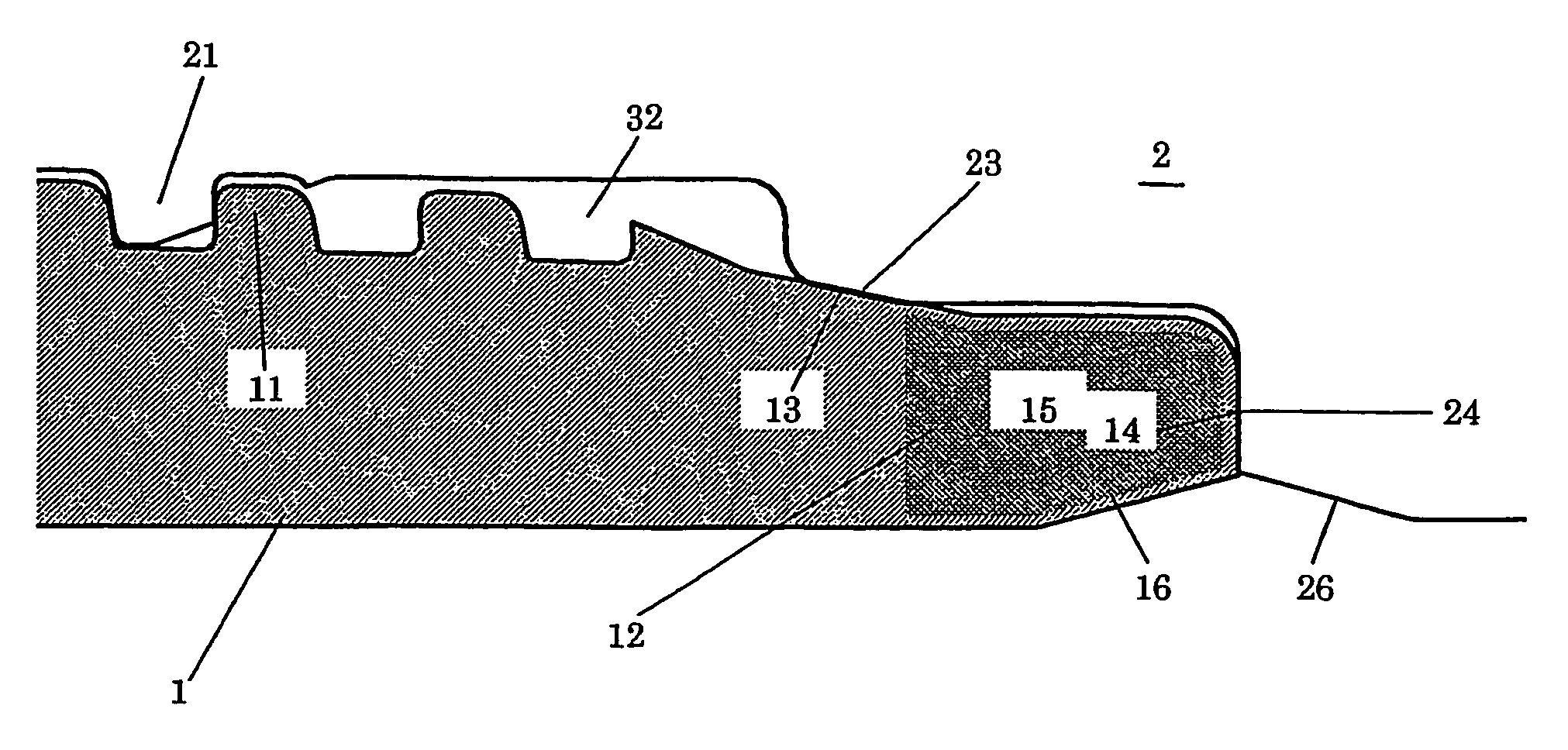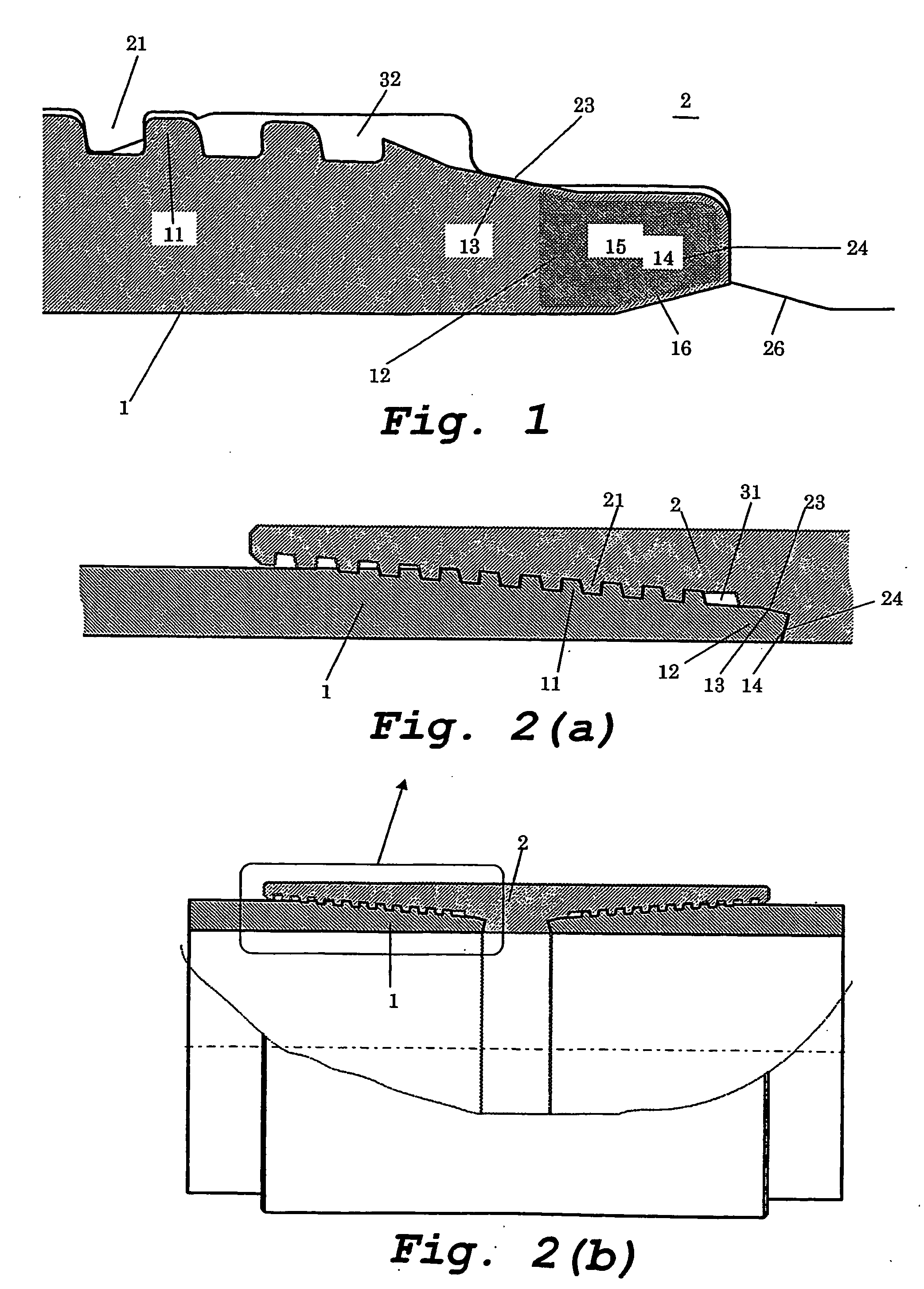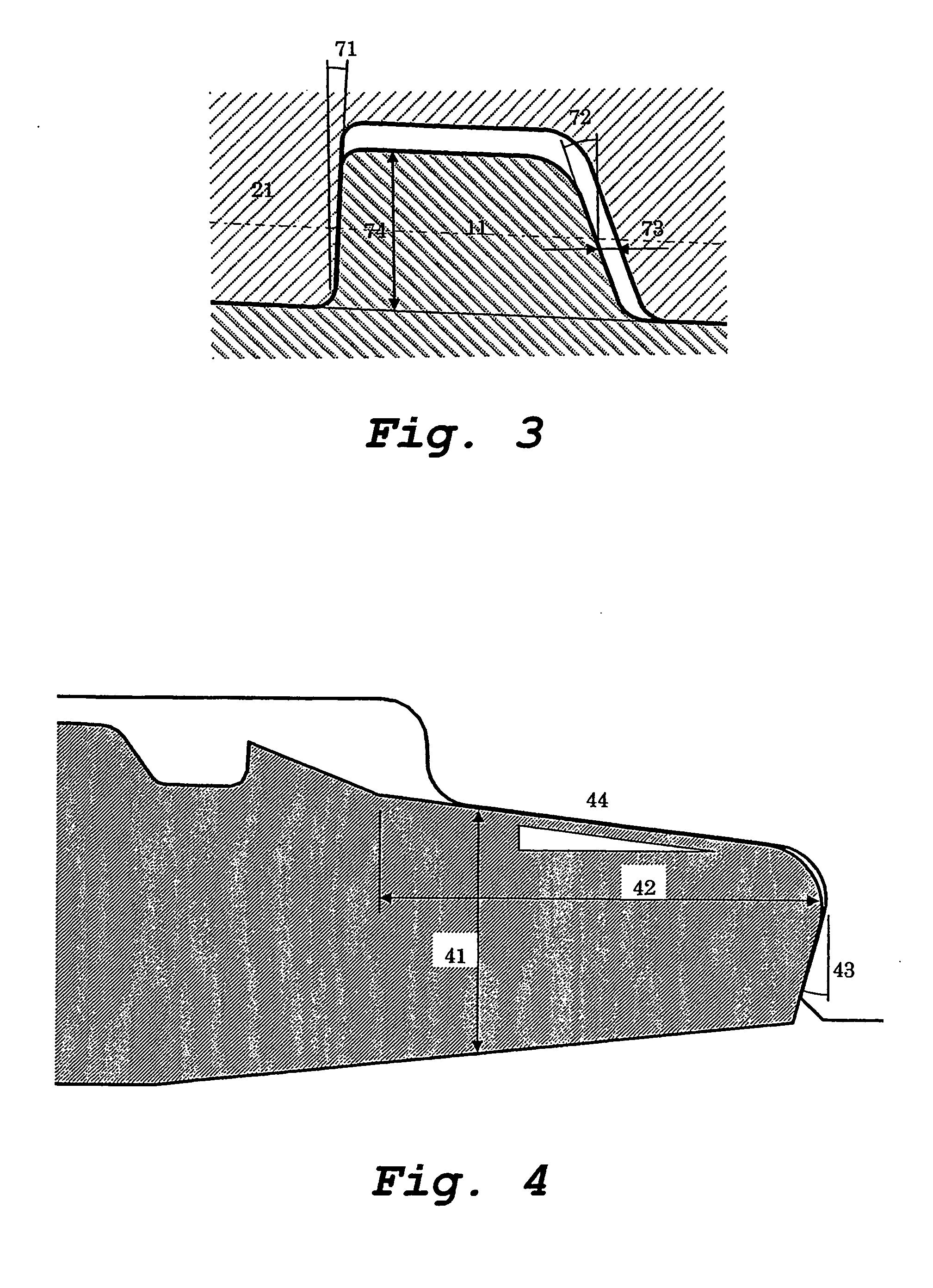Threaded joint for steel pipes
a technology for steel pipes and threaded joints, which is applied in the direction of hose connections, screw threaded joints, mechanical equipment, etc., can solve the problems of increasing the environmental conditions in which crude oil exploration and production takes place, the inability to resist a large compressive load, and the inability of threads to resist compressive loads, etc., to achieve the effect of reducing the risk of slipping
- Summary
- Abstract
- Description
- Claims
- Application Information
AI Technical Summary
Benefits of technology
Problems solved by technology
Method used
Image
Examples
examples
[0110] In order to clearly demonstrate the effects of the present invention, numerical simulation analysis by the elastoplastic finite element method was carried out for the specimens shown in Table 1.
[0111] The specimens shown in Table 1 were all coupling-type threaded joints for OCTG like that shown in FIG. 2 for use with 5- 1 / 2″ 20# (lb / ft) steel pipes (outer diameter of 139.7 mm and wall thickness of 9.17 mm). The steel material used for all the specimens was that specified as P110 by API standards.
[0112] Specimen B was a comparative example in the form of a conventional premium joint. It had a pin lip shape like that shown in FIG. 13. In FIG. 13, reference numbers which are the same as those previously used indicate the same members.
[0113] Specimens C-O had basically the same joint structure as for Specimen A except that the dimensions of the various portions were varied as shown in Table 1.
[0114] However, for Specimen J, the end of a pipe body having the above-described si...
PUM
 Login to View More
Login to View More Abstract
Description
Claims
Application Information
 Login to View More
Login to View More - R&D
- Intellectual Property
- Life Sciences
- Materials
- Tech Scout
- Unparalleled Data Quality
- Higher Quality Content
- 60% Fewer Hallucinations
Browse by: Latest US Patents, China's latest patents, Technical Efficacy Thesaurus, Application Domain, Technology Topic, Popular Technical Reports.
© 2025 PatSnap. All rights reserved.Legal|Privacy policy|Modern Slavery Act Transparency Statement|Sitemap|About US| Contact US: help@patsnap.com



